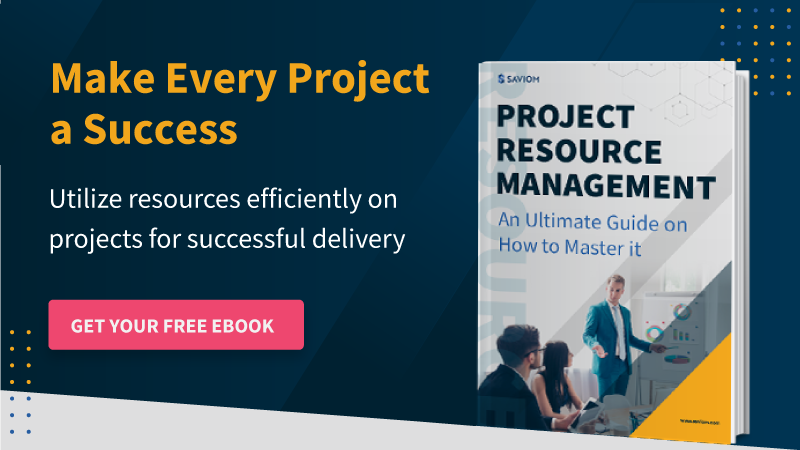“Project meetings take up my entire day, leaving me with no time for actual work.”
“The project kickoff meeting lacked clear direction. I’m not sure what we were trying to accomplish.”
“The stakeholder meeting felt unstructured, with no clarity on expectations or next steps.”
Do these complaints sound familiar? If yes, it is a clear sign that project meetings are not serving their prime purpose. Instead of driving progress, they are becoming time-draining sessions.
To avoid this, every manager needs to master the art of conducting productive, goal-driven project meetings. When done right, meetings serve as powerful tools to align teams, address roadblocks, and ensure seamless execution to ensure projects stay on track—within deadlines and budget constraints.
In simple words, project meetings are critical components in project management that keep a project running smoothly from start to finish.
In this blog, we will explore what a project meeting entails and uncover nine proven strategies that make every meeting count.
What is a Project Meeting?
A project meeting is a scheduled time for stakeholders, clients, managers, and team members to come together and discuss different aspects of a project. These meetings, held regularly throughout the project lifecycle, serve as a platform to review progress, address challenges, and make informed decisions. Their primary purpose is to keep everyone aligned, eliminate confusion, and ensure smooth execution.
The main objectives of project meetings are to:
- Inform concerned parties about the project’s progress
- Identify bottlenecks and discuss mitigation strategies
- Ensure timely completion of tasks within scope and budget
- Align team members and stakeholders on key decisions
- Foster collaboration and improve accountability
Now that we know what a project meeting is, let us explore its different types.
What are the Different Types of Project Meetings?
Understanding project meeting types helps develop the right agenda and cover the necessary information without getting off-track. Here are some of the most critical types:
Project Kick-off Meetings
A kick-off meeting is held at the beginning of the project to establish the project goals. It involves high-level stakeholders, such as the project sponsor, management, the project manager, and team members. The main goal of the meeting is to discuss the roles and responsibilities of the team members involved and ensure that everyone understands the project scope, procedures, and plans. However, within the project team, the kick-off meeting only involves the project manager and team members.
Read More: What is a Project Scope? Benefits, Best Practices, and Steps to Create an Effective One
Regular Team Meetings
Regular team meetings, often referred to as daily standups, are short, focused discussions where team members, including project managers, come together to review ongoing work. Team members provide brief updates on task progress in these meetings, discuss challenges, and coordinate upcoming activities. The purpose is to ensure smooth collaboration, address roadblocks early, and keep everyone focused on project goals. Regular team meetings also help improve accountability, enhance communication, and foster a proactive approach to problem-solving.
Project Status Review Meetings
Status review meetings are organized regularly to exchange and analyze the project’s current progress. During these meetings, the project manager distributes performance reports among the team and stakeholders to provide visibility into recent performance and task progress. Its purpose is to verify if everyone is completing their tasks on time. The status review meeting also helps you understand the variance in the project budget and communicate critical information ahead of the curve.
Agile Scrum Meetings
Agile scrum meetings are short, time-boxed discussions to assess progress and align team efforts in a Scrum framework. They are held daily or at key points in the sprint cycle to ensure efficient teamwork and accelerate progress. Regular scrum meetings align teams, enable quick adaptability to change, and drive continuous improvements. Moreover, agile scrum meetings include daily scrum or standups, sprint planning sessions, sprint iteration reviews, and sprint retrospectives.
Read More: What is Agile Project Management & How to Effectively Manage Resources?
Technical Review Meetings
A technical review meeting is a structured discussion among project professionals to assess detailed technical aspects such as engineering, manufacturing, etc. These meetings allow a system of checks and balances from various Subject Matter Experts (SMEs) to improve the product’s design and identify potential issues. It is mainly related to technical architectural discussions, detailed programming-level discussions, etc.
Stakeholder Meetings
Stakeholder meetings act as vital communication bridge between project managers and key stakeholders, including clients, investors, and senior management. Stakeholder meetings provide a platform to review project milestones, assess risks, gather insights, address concerns, and secure approvals for critical decisions. The purpose of these meetings is to maintain stakeholder engagement and ensure their expectations are met.
Change Control Meetings
Despite a well-structured plan, changes are inevitable throughout a project’s lifecycle. Change control meetings are organized by the CCB (change control board) to examine modifications based on their impact on the project delivery and make decisions. In this meeting, the project manager presents their professional opinion on the impact of the proposed change, makes a recommendation, and discusses steps for implementing the changes.
Read More: What is Change Management in Project Management, and Why Is It Important?
Post-mortem Meetings
A post-mortem meeting also known as a retrospective or debrief, is a structured discussion held after project completion to evaluate its successes, challenges, and key takeaways. During this meeting, the team analyzes documents and lessons learned to enhance future project execution. The purpose is to prevent recurring issues and refine processes for better efficiency. A well-conducted post-mortem meeting promotes open feedback, strengthens team collaboration, and drives long-term project success.
After exploring the different types of project meetings, let us now understand the importance of project meetings.
The Importance of Project Meetings
“Effective meetings create a platform for open talks among team members that bring in varied information and viewpoints to solve issues and assist one another in achieving the collective goals.” ~ AAMC
Let’s take a scenario to understand the importance of a project meeting.
You are managing a project, and during its course, a risk turns into an issue. However, during the project initiation meeting, you did not convey these risks to the stakeholders nor brainstorm a mitigation plan. So naturally, during the execution phase, the risks become unmanageable and ultimately hinder your project progress.
This oversight will lead to re-work, budget overruns, missed deadlines, poor deliverables, and a dissatisfied project client. All of this happened because the agenda for the initiation meeting was not fulfilled. Thus, running a productive meeting is critical to avoid such repercussions.
Moreover, conducting project meetings helps you to share critical information and gather input to make data-driven decisions and keep the assignment on track. It lets you get buy-ins and approvals from project stakeholders, update them about the ongoing progress, incorporate changes, and improve delivery.
Meetings can also do wonders for a team’s productivity. It can boost employee morale by celebrating milestones, thus creating a sense of team belonging and enhancing resource productivity. Therefore, a well-organized meeting is ideal for successful execution and delivery within the stipulated timeline and budget.
Read More: Signs of Low Employee Morale and How to Course Correct
Let us now learn the nine key strategies to conduct effective meetings.
9 Key Strategies to Conduct an Effective Project Meeting
A Bain survey states, “Around 15% of an organization’s collective time is spent in meetings.”
This shows that meetings play a crucial role in professionals’ daily work. So, conducting effective meetings is essential for sharing information.
Here are nine powerful tips for effective meetings.
Create a Practical Meeting Agenda
A well-defined agenda sets the foundation for a productive meeting by outlining key discussion points. It helps participants prepare in advance, ensuring focused conversations and efficient use of time.
Clearly specify objectives, assign time slots to each topic, and share the agenda beforehand. This keeps discussions goal-oriented and prevents unnecessary deviations.
Include the Right Attendees & Encourage Participation
“It’s all about getting the right people on the bus” ~ Jim Collins
Ensuring that the right attendees are present in project meetings is crucial for meaningful discussions and effective decision-making. Inviting only those directly involved with the agenda keeps the conversation focused and prevents inefficiencies.
A well-curated attendee list allows for more structured and insightful collaboration, as each participant brings relevant expertise and valuable input to the table. Moreover, encouraging active participation and creating a supportive environment where team members feel heard leads to better team engagement.
Read More: 11 Effective Strategies to Enhance Employee Engagement
Designate Meeting Roles
Assigning clear meeting roles ensures productive discussion and minimizes confusion. Managers can define roles like facilitator (one who will lead the meeting and keep the discussion focused), timekeeper (ensures the meeting stays on schedule), note-taker (documents key points and action points), and presenter (shares insights, reports, and updates).
Additional roles can further enhance the effectiveness of the meeting. For example, a moderator can encourage participation and balance discussions, while a technical support person ensures the smooth use of tools and technology. This setup streamlines discussions and promotes accountability, as each participant has a clear function.
Keep the Meeting Focused
Keeping meetings focused ensures productive discussions and efficient use of time. Setting time limits for each topic keeps the meeting on track and avoids unnecessary delays. The facilitator should guide discussions, redirecting conversations when they drift away from the main objectives. A well-structured and time-conscious approach leads to meaningful discussions and actionable outcomes.
For instance, you are hosting a technical review meeting, but some participants suddenly start discussing the budget and its variance. As a project manager and a discussion facilitator, your onus is to keep the meeting focused and bring the participants’ attention back to the agenda. You can acknowledge their concern and suggest addressing it in a separate project budget review meeting.
Read More: How to Develop an Effective Project Budget in 8 Simple Steps?
Ask for Feedback and Suggestions
Encouraging constructive feedback and suggestions after a project meeting improves future discussions and overall team collaboration. Providing space for clarifying queries allows team members to resolve doubts and better understand action items. You can use a quick survey, open-ended questions, or informal check-ins to keep it a two-way conversation. This encourages feedback and makes meetings more efficient.
For example, at the end of a project meeting, the facilitator can ask, “What went well in this meeting, and what can we improve?” This allows team members to clear their doubts and provide feedback on agenda structure and time management. Lastly, clarifying doubts ensures everyone leaves with a clear understanding of their responsibilities.
Leverage the Right Tool for a Productive Meeting
Selecting secure and efficient video conferencing software is crucial for facilitating productive and engaging virtual meetings. The right technology allows the meeting facilitator to schedule meetings through email, upload agenda papers, and even conduct face-to-face video sessions. Additionally, features like screen and document sharing enhance communication and decision-making.
Beyond functionality, secure and reliable connectivity is critical to maintaining privacy, minimizing disruptions, and ensuring seamless experience. Lastly, meetings become more impactful and result-driven when well-structured and supported by advanced technology. Ultimately, this leads to improved employee productivity and smoother project execution.
Read More: 10 Effective Ways to Increase Employee Productivity in the Workplace
Recap Key Takeaways & Define Action Items
An effective project meeting doesn’t end when the discussion stops. It concludes with a recap of key takeaways and clearly defined action items. Summarizing critical decisions, project timelines, budget updates, and task dependencies ensures that all attendees leave the meeting fully aligned and aware of the responsibilities. Moreover, a quick recap also highlights task dependencies and keeps the team focused on priorities.
Beyond reiterating key discussion, defining the specific tasks assigned to individuals with clear deadlines and expected outcomes is essential. For example, instead of saying, “We need to finalize the website design,” a well-defined action item would be, “John will finalize the website design by Friday and share it for review by Monday.” This makes meetings more purposeful and action oriented.
Document the Minutes of the Meeting
Many team members are likely to forget the details of the previous meeting. Therefore, project managers or meeting facilitators should distribute the last meeting’s minutes to the scheduled attendees to add more context and keep everyone in the loop. Circulating this will help attendees refer to the notes and decisions that the group discussed in the last panel.
For example, after a project planning meeting, the facilitator can send a summary document outlining key points. It may include the meeting date, attendees, approved agenda, project milestones, and follow-up tasks assigned. Additionally, noting task dependencies ensures teams understand their roles in the bigger picture. Clear documentation helps track progress and ensure accountability throughout the project.
Read More: What is a Project Plan & How to Create an Effective One?
Begin and End the Meeting on Time
Starting project meetings on time shows respect for participants’ schedules and sets a disciplined, professional tone. It ensures that discussions stay focused and productive, preventing unnecessary delays. A punctual start also encourages responsibility and accountability, reinforcing a culture of time management within the team.
Moreover, ending meetings on time is essential to maintain productivity and prevent fatigue. Sticking to the scheduled duration ensures that discussions remain concise and action oriented. A timely wrap-up allows team members to transition smoothly to their following tasks while keeping the project on track.
Additional Tips for Streamlining Project Meetings
Planning effectively, engaging participants, and ensuring clear communication are essential for successful project meetings. A well-structured meeting boosts the team’s productivity, keeps the team aligned, and drives projects forward.
For conducting excellent project meetings, follow these additional tips:
- Choose the right meeting format based on project needs
- Keep well-organized meeting notes for easy reference
- Minimize meeting cancellations to maintain consistency
- Conduct timely follow-ups to ensure action items are addressed
So, what are you doing to make your project meetings more impactful?
The Glossary
Read More: Glossary of Resource Workforce Planning, Scheduling and Management












